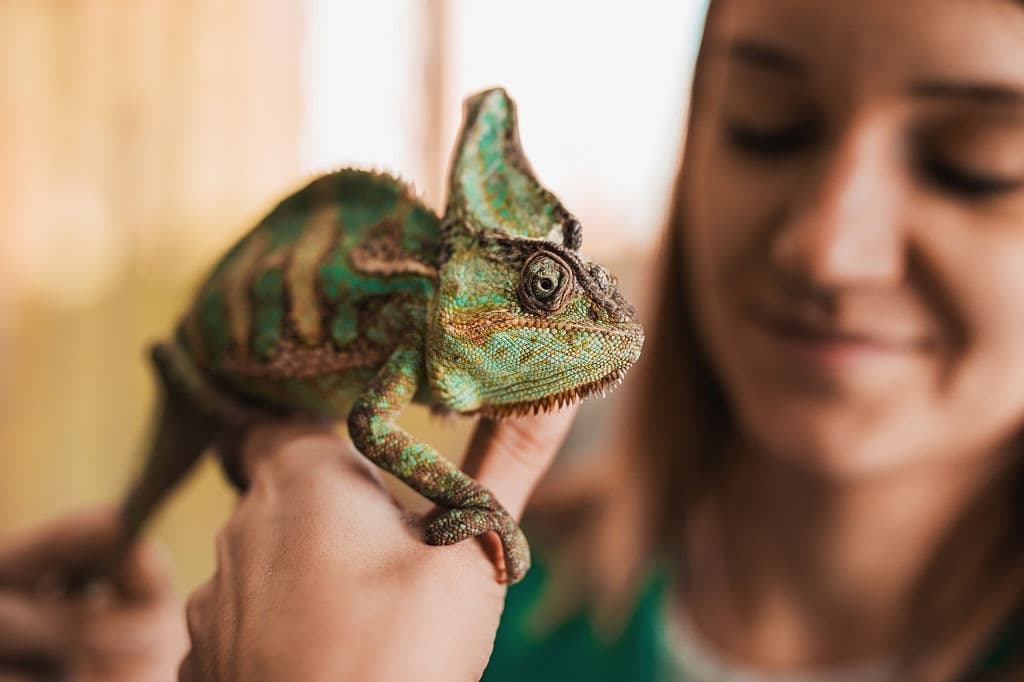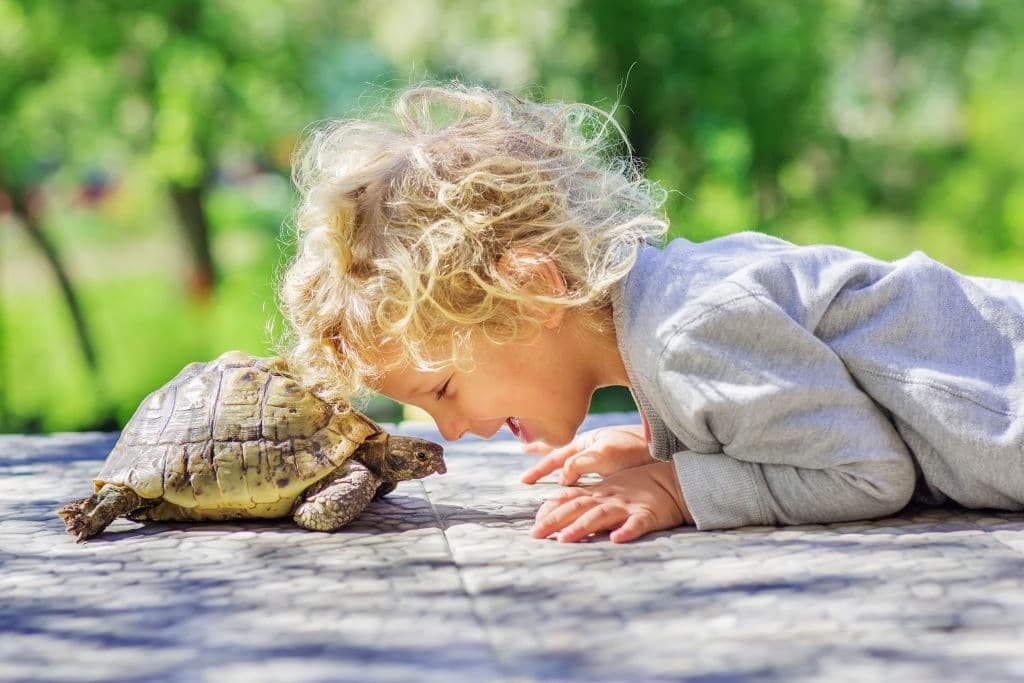Keeping pet reptiles is becoming quite a popular trend these days. Not only because they’re unique as a pet, but also, they’re not easily tamable. Unlike most other common pets like cats or dogs, reptiles are not always very friendly and obedient at first.
But once you get along well with them, convincing them that you are a well-wisher, not a predator, they’ll gradually become your best and most polite companion. So, if you’ve set your mind to have a reptile as a pet, you’ll need to possess proper knowledge about reptiles, their habits, and ways to manage them well as a pet.
And that is what we’re going to cover in this post. So read on to learn everything you need to know to start off with a reptile pet.
What Is a Reptile?
Generally, the animals that crawl by pushing their chests are considered reptiles. And so, snakes, lizards, turtles, and crocodiles are some examples of reptiles. If you watch them a bit carefully, you’ll notice them crawling by pushing their chests against the ground.
They have very rough and dry skin with or without scales. Reptiles are usually called cold-blooded animals because their body seeks heat for metabolism. Also, unlike most other pet animals, they reproduce by laying eggs.
Things You Should Know to Prepare for a Pet Reptile

Reptiles are not the kind of pets that you should get on a whim. Therefore, you will need to prepare yourself and your house for a reptile before introducing them to your house.
It is crucial to make your pet reptile feel at ease and comfortable at your house on the first visit. Moreover, it is also essential to ensure your and your family’s safety as well. And so, you will need to make the following preparations before bringing a reptile home.
License for a Pet Reptile
Just like how you need to have a license to own a gun, you’ll need a license to own a pet reptile too. But how’s it even relatable? Well, many reptiles can be dangerous to people if not appropriately regulated.
You cannot just take a reptile from the wild and bring it home. You will have to take a license from the state authority to own a reptile. If you’re purchasing it, then you’ll have to purchase the license from the supplier as well. This is required for the safety of you, your family, and your neighbors.
The Reptile’s Nutritional Needs
Now, since you’ve already planned to get a pet reptile, you must have also decided what kind of reptile you’ll be getting. Different kinds of reptiles have different nutritional requirements. Know what your reptile needs are before you get one.
While most reptiles such as snakes, lizards, and chameleons require protein insects like Superworms as their food, many others such as turtles and tortoises prefer green vegetables and aquatic weeds.
The Reptile’s Gender
Like all other animals, reptiles have genders as well. It is better to know the gender of your reptile before you get one. Because it will go through physical and behavioral changes based on its gender.
Moreover, if you want your reptile to reproduce and form a family, it will need a mate of the opposite gender as well. Even though there are a few lizard species that reproduce asexually, all other reptiles multiply sexually.
Know Where to Touch
You should really learn where it is appropriate to touch your pet reptile. You definitely don’t want to make your reptile uncomfortable as they might attack you in defense.
It is better not to grab the tail of your reptile as it makes the position of the reptile imbalanced making it very uncomfortable.
Normal Growth and Aging Rate of the Reptile
The growth and aging of reptiles differ with their types. So, you should have an approximate idea about how long your pet reptile will live and how large it will get by the passage of time.
You will have to adjust the arrangements and settings required to nurture them to keep pace with their growth, including their food, accommodation, and habitat environment. Moreover, you’ll need to have some reptile health knowledge to know if there’s any malfunction in their proper growth and development.
Know What Makes Them Insecure
You should have a good idea about what are the things that make your reptile insecure and unsafe. For example, if your pet reptile is captivated from the wild, then it probably had experiences of getting attacked by humans before.
That is why some of your actions might trigger the reptile to feel insecure and unsafe at times. And if it once feels insecure, it’ll try to defend itself with dangerous moves.
Learn About its Health Problems and Causes
Ensure you know well about the health problems and diseases that can occur in the kind of reptiles you’re keeping as a pet. Also, many reptile diseases might even harm or spread to humans. So be cautious about that as well.
Try to research and investigate what the causes of the most common diseases in pet reptiles are and nourish your reptile accordingly. Besides, research about advanced treatment options for their health issues – for example, many regular pets require light therapy.
Remember It’s a Long-term Commitment
Before starting off your relationship with a pet reptile, keep in mind that this might be a life-long relationship as generally reptiles have a longer life than humans.
Many reptiles even live for 100 to 150 years, exceptions are lizards that live about 15 to 17 years max. So, prepare yourself for the commitment before jumping into it.
Get Everything You Need Before Bringing It

You will need to arrange several things before bringing your reptile home as a pet. Don’t just go to the shop; purchase one and keep the rest for later. To convince your pet reptile that you’re its well-wisher and won’t harm it, you’ll have to offer it a proper environment from the very beginning.
Below are a few important things that you must manage and ensure bringing your new reptile pet home.
1. Prepare the Foods and Supplements
Buy the food and necessary supplements that are needed for the reptile before bringing it home. Because you don’t want it to act aggressively out of hunger, do you?
Also, make sure you keep additional supplements to serve the reptile with the food, such as vitamins and calcium. Many pet reptiles suffer from calcium deficiency due to limited sources of calcium in their daily diet.
2. Prepare Separate and Proper Accommodation for It
It is better not to take your pet reptile as naive and harmless enough to be let loose in your house from the first day you bring it home. That is because you and your family’s safety should be your utmost priority; reptiles can be unpredictable at first before they bond with you and your family.
That is why it is necessary to keep a separate accommodation like a cage or reptile tank inside or outside the house. And make sure the cage is suitable for it where it feels safe and comfortable.
3. Ensure Proper Temperature
Maintaining proper temperature is essential for the growth and development of a reptile. As cold-blooded animals, reptiles require a certain amount of heat to perform their body’s metabolic functions.
The normal temperature of our houses is generally colder for their growth. Therefore, they require more heat for proper growth. So, if needed, you can buy additional heaters for the comfort of the reptile.
4. Ensure proper humidity
Ensuring proper humidity for your pet reptile in its accommodation is a very important factor to consider as well. Lack of adequate moisture can lead to severe health issues for your pet, even death. On the other hand, too much moisture might lead to fungal infections.
Hence, maintaining just the right amount of humidity for their proper development will be a large part of your responsibility as a reptile pet owner.
5. Ensure sunlight
Like most other creatures in the world, reptiles require sunlight for growth and metabolism as well. Sunlight provides them with UVB and vitamin D. They won’t survive for too long without this.
Thus, try to give your reptile regular sun exposure on your lawn or terrace. And make sure their accommodation bears sufficient light.
Tips to Start off With Your Pet Reptile
Here are a few tips that you should follow for better interaction with your pet reptile as a beginner.
- Start off with a harmless or captive-bred reptile: Don’t start off with a giant python, as it might get tough or dangerous for you to keep it under control. So, start with harmless and captive-bred baby snakes, turtles, or lizards.
- Treat and handle your pet with confidence: Treat your pet with confidence. Don’t keep any hesitations or fear in mind while handling it because it can sense your hesitation – which will make them nervous too. And so, don’t go for reptiles you’re not absolutely confident about.
- Make sure your hands are clean: While handling yourreptile, you should make sure your hands are clean. Otherwise, their scaley skins might get fungal infections.
- Monitor children interacting with the reptile: Again, you and your family’s safety should be the utmost priority to you. So, never trust the reptile completely when it comes to children.
- Leave the reptile alone after feeding: Reptiles have very slow digestion. And it needs to be at rest while the foods are digesting. Thus, avoid handling them after feeding.
- Keep its cage clean: Cleanliness is a crucial factor in maintaining the pet reptile’s proper health. Don’t let it grow in a dirty environment as it might lead to serious health issues.
- Schedule weekly vet visits for a checkup: Finda local reptile veterinarian and schedule weekly visits for checkups. Because many times you might not realize abnormalities in your reptile that are required to be treated.
Best Pet Reptiles for Beginners
Not all reptiles are perfect for beginners to start with. If you haven’t decided what to get as your first reptile pet, we have put together a list of the best reptiles for a beginner.
Lizards: Lizards are pretty much harmless animals. And they are good to be kept as small captive pets.
Corn Snakes: Corn snakes are very docile among snakes and don’t harm humans generally for no reason.
Ball Pythons: Ball pythons are the most docile among pythons. They’re giant yet don’t harm humans.
Turtles: Turtles are the friendliest and most harmless among all other reptiles. There’s no room for hesitations if you’re planning to get a pet turtle.
Final Words
No matter which reptile you bring to your home as a pet, treat it with respect. Have patience and let them adjust to the new environment. finally, and most importantly, be vigilant and ensure you and your safety. Don’t take any risks when handling a reptile.
Thanks for reading till the end! Hope we could help.









